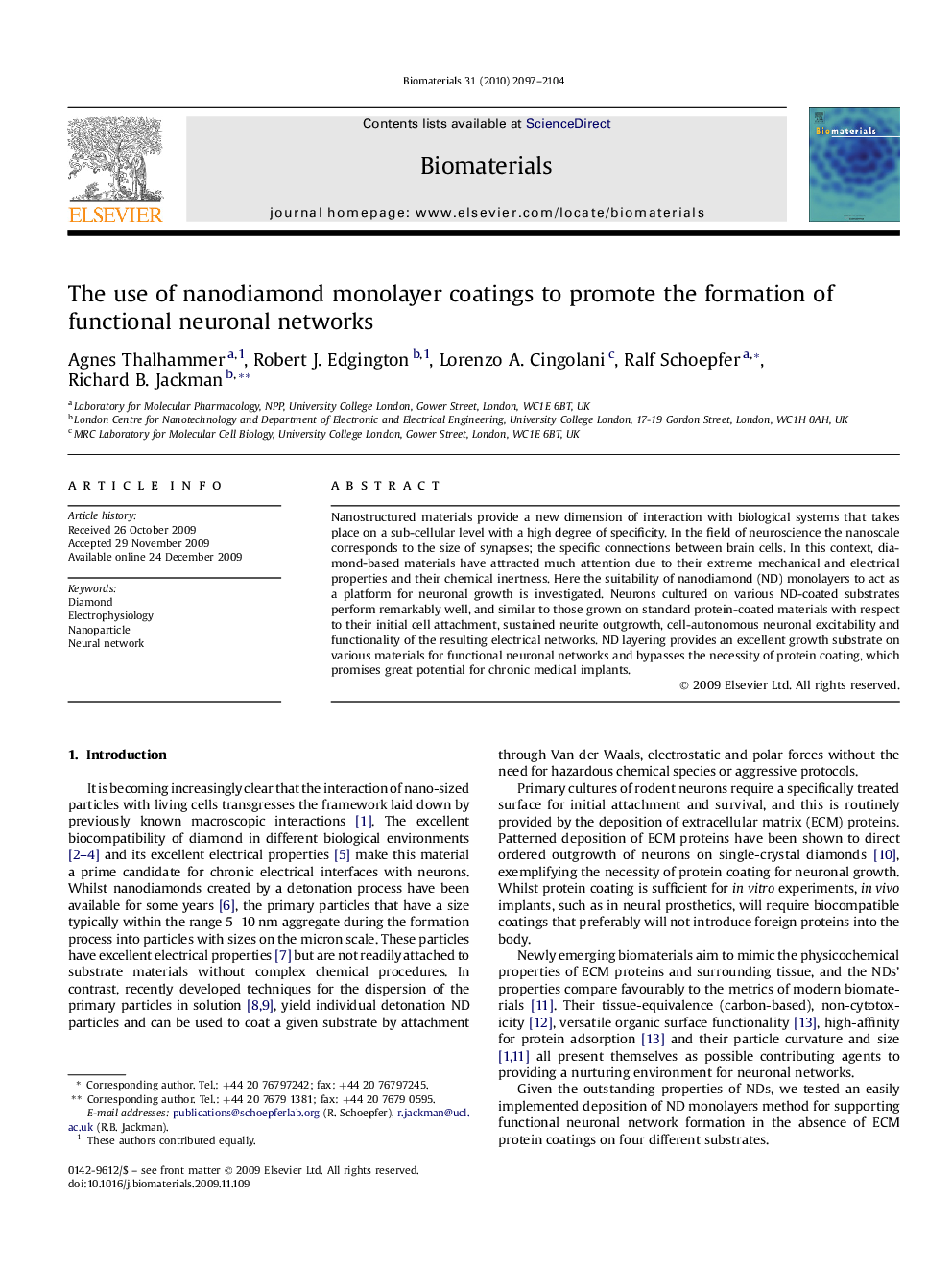| Article ID | Journal | Published Year | Pages | File Type |
|---|---|---|---|---|
| 8664 | Biomaterials | 2010 | 8 Pages |
Nanostructured materials provide a new dimension of interaction with biological systems that takes place on a sub-cellular level with a high degree of specificity. In the field of neuroscience the nanoscale corresponds to the size of synapses; the specific connections between brain cells. In this context, diamond-based materials have attracted much attention due to their extreme mechanical and electrical properties and their chemical inertness. Here the suitability of nanodiamond (ND) monolayers to act as a platform for neuronal growth is investigated. Neurons cultured on various ND-coated substrates perform remarkably well, and similar to those grown on standard protein-coated materials with respect to their initial cell attachment, sustained neurite outgrowth, cell-autonomous neuronal excitability and functionality of the resulting electrical networks. ND layering provides an excellent growth substrate on various materials for functional neuronal networks and bypasses the necessity of protein coating, which promises great potential for chronic medical implants.
